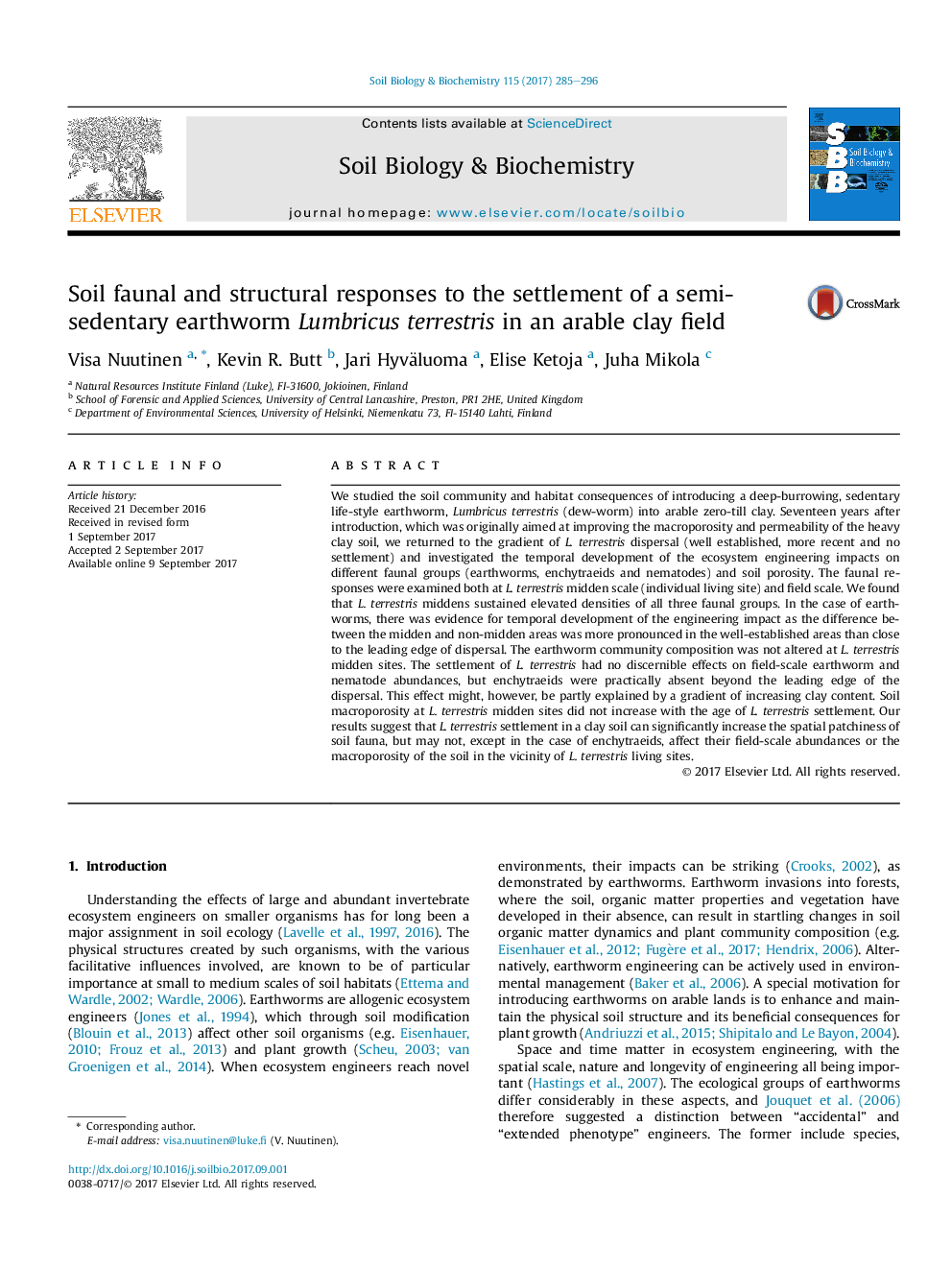| Article ID | Journal | Published Year | Pages | File Type |
|---|---|---|---|---|
| 5516250 | Soil Biology and Biochemistry | 2017 | 12 Pages |
â¢Consequences of L. terrestris introduction on selected fauna and soil porosity were investigated.â¢L. terrestris midden sites are faunal hot-spots, possibly with group-specific pace of development.â¢High earthworm abundance was not associated with increased macroporosity in L. terrestris midden sites.â¢For most groups, L. terrestris settlement mainly reorganizes the small-scale spatial pattern of fauna.â¢Enchytraeid existence may, however, be facilitated by the presence of L. terrestris.
We studied the soil community and habitat consequences of introducing a deep-burrowing, sedentary life-style earthworm, Lumbricus terrestris (dew-worm) into arable zero-till clay. Seventeen years after introduction, which was originally aimed at improving the macroporosity and permeability of the heavy clay soil, we returned to the gradient of L. terrestris dispersal (well established, more recent and no settlement) and investigated the temporal development of the ecosystem engineering impacts on different faunal groups (earthworms, enchytraeids and nematodes) and soil porosity. The faunal responses were examined both at L. terrestris midden scale (individual living site) and field scale. We found that L. terrestris middens sustained elevated densities of all three faunal groups. In the case of earthworms, there was evidence for temporal development of the engineering impact as the difference between the midden and non-midden areas was more pronounced in the well-established areas than close to the leading edge of dispersal. The earthworm community composition was not altered at L. terrestris midden sites. The settlement of L. terrestris had no discernible effects on field-scale earthworm and nematode abundances, but enchytraeids were practically absent beyond the leading edge of the dispersal. This effect might, however, be partly explained by a gradient of increasing clay content. Soil macroporosity at L. terrestris midden sites did not increase with the age of L. terrestris settlement. Our results suggest that L. terrestris settlement in a clay soil can significantly increase the spatial patchiness of soil fauna, but may not, except in the case of enchytraeids, affect their field-scale abundances or the macroporosity of the soil in the vicinity of L. terrestris living sites.
